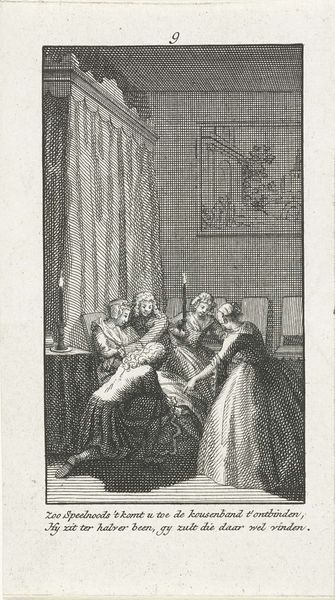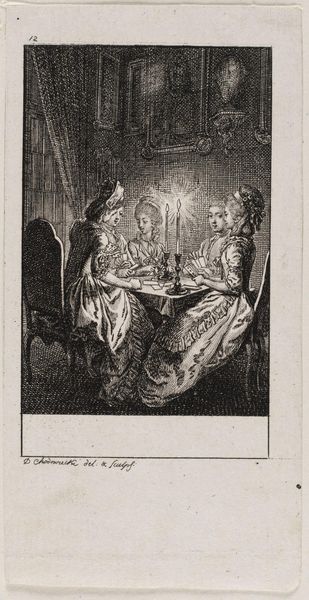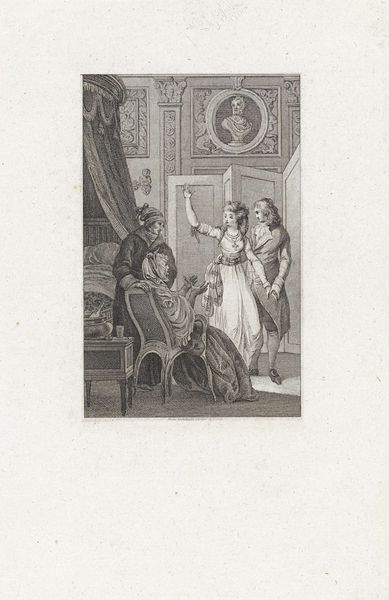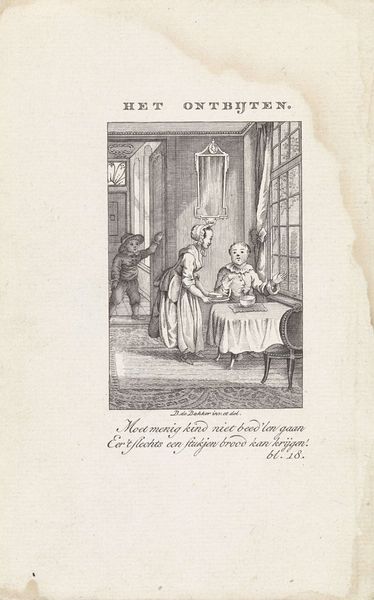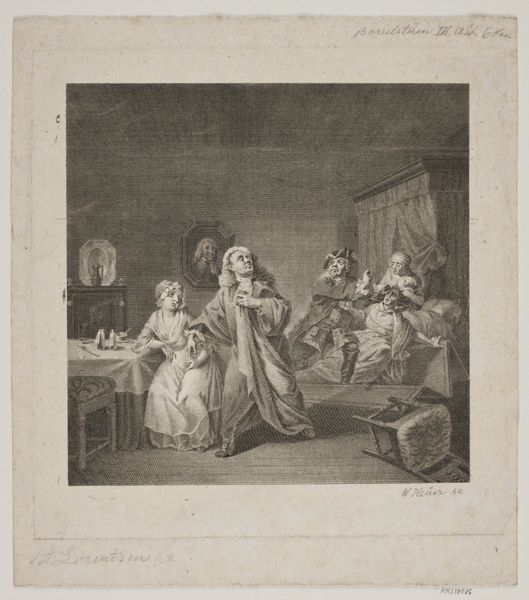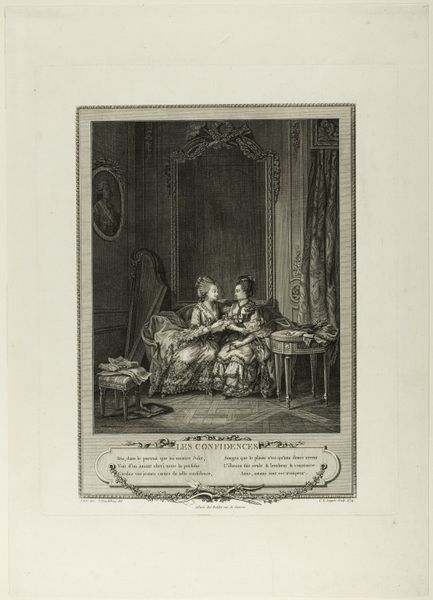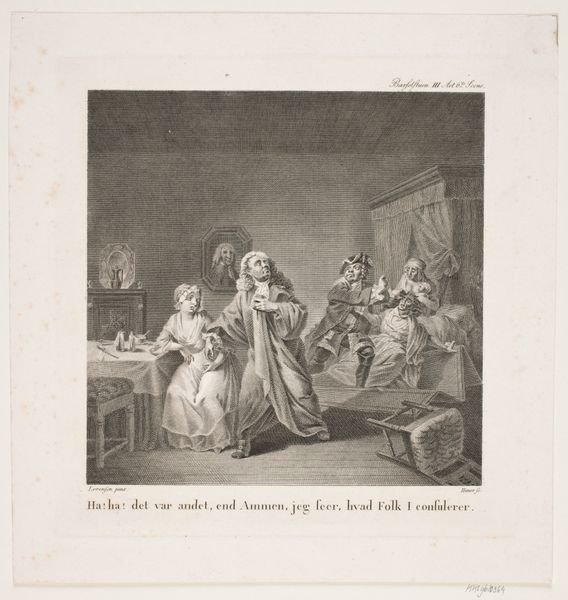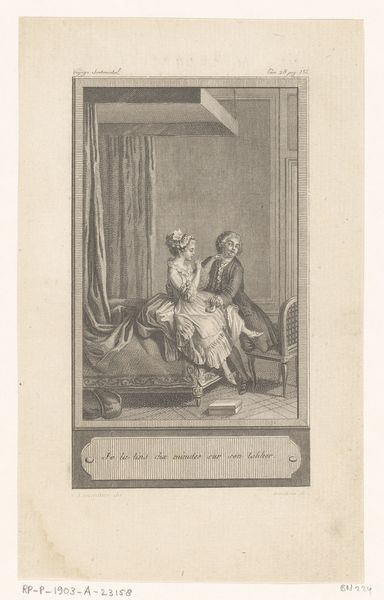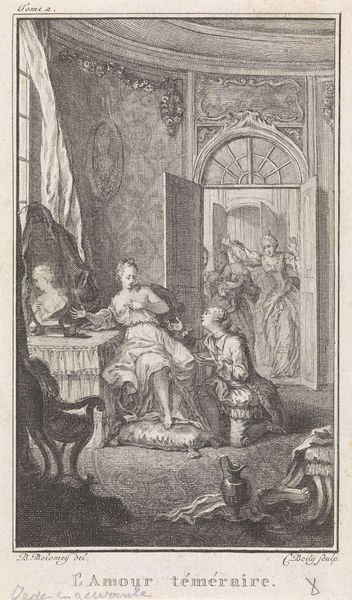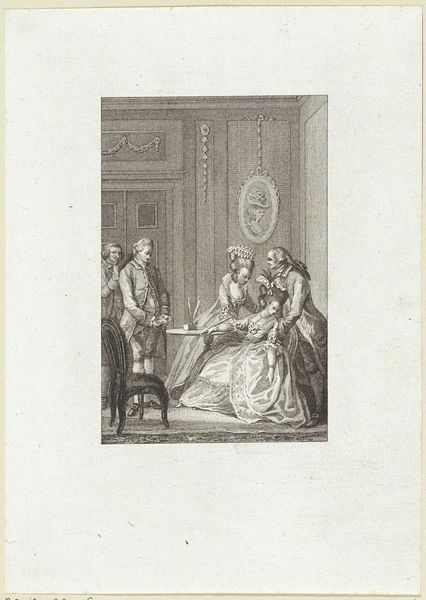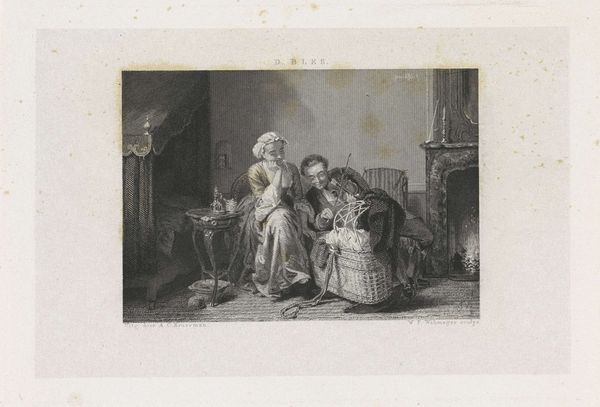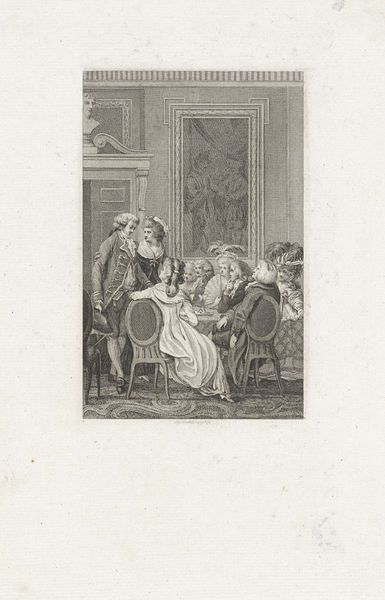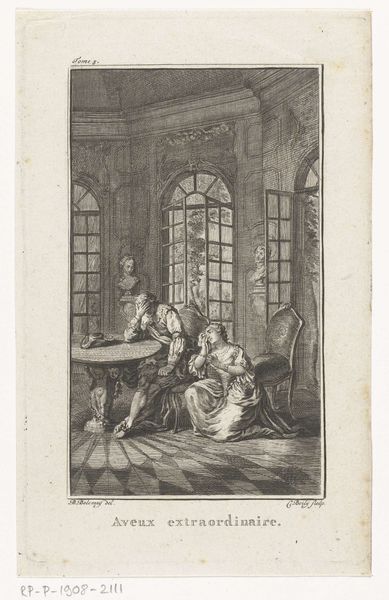
print, engraving
#
narrative-art
#
baroque
# print
#
old engraving style
#
figuration
#
historical fashion
#
old-timey
#
history-painting
#
engraving
Dimensions: height 76 mm, width 137 mm
Copyright: Rijks Museum: Open Domain
Curator: "Ontdekking van de Beeldhouwkunst," or "Discovery of Sculpture," an engraving by Bernard Picart from 1727, currently residing in the Rijksmuseum, depicts the origin story of art. It offers us a glimpse into how art creation was conceptualized in the early 18th century. Editor: The most striking element for me is the palpable atmosphere – a domestic scene rendered with almost scientific precision. It conveys both intimacy and a careful observation of the natural world that must have underpinned artistic innovation in the 18th century. Curator: Exactly. And we see the narrative being unfolded: Dibutade conceiving the idea of sculpture by observing his daughter tracing the shadow of her lover on the wall. It encapsulates broader conversations on class, gender, and power structures in artistic practices. It situates the creative act within a patriarchal framework where women, or even lovers, inspire artistic endeavor but rarely get recognized themselves. Editor: Agreed, it's definitely staged within the male gaze. But looking at the material aspect, observe the careful layering of lines Picart employed to build form and create tonal variation. He created a rather industrial atmosphere within a household. The entire story circles back to material: light, shadow, and the very wall acting as a medium. The labor behind such meticulous engraving would be seen through an exploitation of its class status. Curator: That’s an astute point! Highlighting how material circumstances are intimately intertwined with cultural narratives. Consider the way Picart chose the medium itself. As a print, it's infinitely reproducible. This brings up interesting ideas regarding authorship, and artistic innovation within this narrative, right? What constitutes original thought, and what happens when labor becomes industrialized. Editor: Yes, we can explore both labor and ingenuity when examining this print and, moreover, Picart positions shadow— a transient entity—as the blueprint for a lasting form: sculpture. We have, in this historical fashion, the interplay between the fleeting and the fixed, which raises pertinent questions about value and how we choose to eternalize specific instances or stories through labor intensive artistry. Curator: Reflecting on Picart's print, I find it continues to spark fascinating dialogues about art history and social dynamics within production and reception practices, reminding us to question normative expectations. Editor: And I am impressed by the engraving and material's testimony about process itself. It reminds us of how materially grounded art is while asking questions regarding art’s production process!
Comments
No comments
Be the first to comment and join the conversation on the ultimate creative platform.
